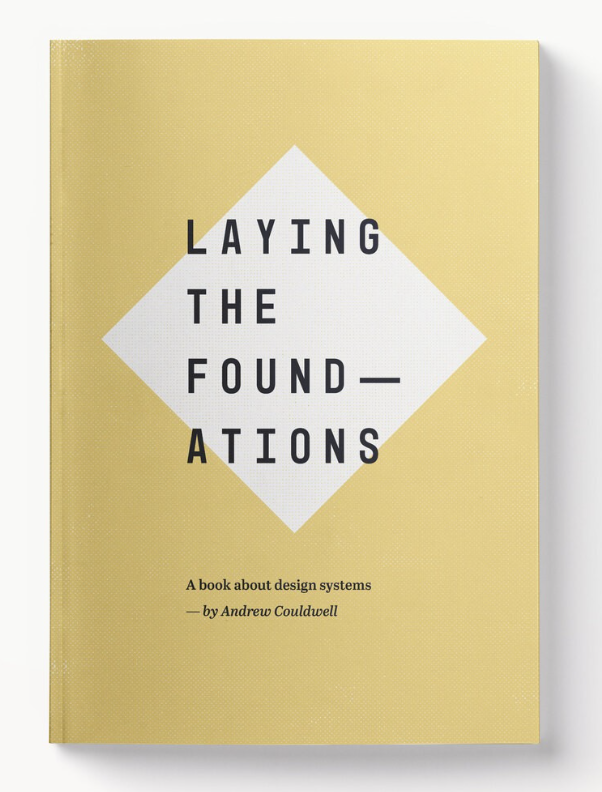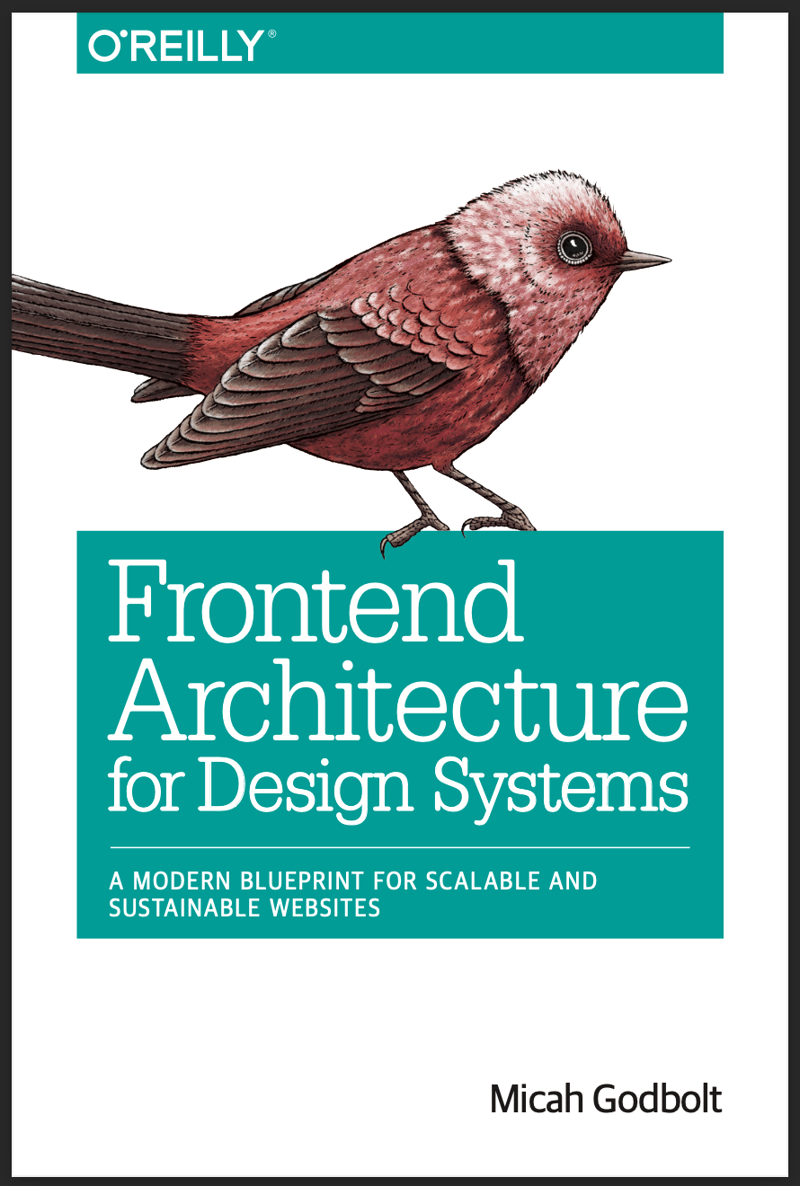Top Books on Design System that i Read last year
This blog would be helpful for UI/UX designers, product manager, product designers, frontend developers, if you have peer or friends in those roles do share the blog with them. Can be a good new year gift as well. Just saying ?!
Creating a Design System - The Why Book
Creating anything of great value requires a great purpose around it. Purpose exists in the problem space. If your purpose is to solve the problems of your stakeholders you must understand their problems better than them. And therefore you need new perspective lense. Reading this book would give you that lense and pattern to discovery user problems, you can then create a framework in your mind to solve the problems.
1. CONTINUOUS DISCOVERY HABITS - by Teresa Torres

Recommended for Product Designers, Product manager, UX Designer much for then Frontend developers or UI Designers.
Few Notes from the book :
Begin With the End in Mind
Opportunity Solution Tree
Frame, refine, and prioritize the opportunity space
Prioritizing Opportunities, not solutions
Two way Door Decisions
Quantity Leads to Quality
Testing Assumption, Not Ideas
Measuring Impact
2. Laying the Foundations - by Andrew Couldwell

Design System 101
This book is real talk about creating design systems. No jargon, no glossing over the hard realities, and no company hat. Just good advice, experience, and practical tips.
Notes:
How to Sell a design system at your company ?
Mission, values, and principles of a design System
Much more learning from the book
I would highly recommend the book to UI Designer, Product Designer, the book also focus more on practical tips, and setting up realistic expectations
3. Thinking in Systems: A Primer - By Donella Meadows
Thinking in Systems: A Primer by Donella Meadows is an insightful guide to understanding and working with complex systems.

Here's a brief summary of the book's key concepts:
What is a System?
Stocks and Flows
Feedback Loops, Delays, Leverage Points
System Traps and Opportunities
Mental Models
Recommended for Product Manager, Team Leads, or developers as well, anyone who like systems in general.
4. Articulating Design Decisions:
Great Designers are great StoryTellers as well

Easy to Read,
Book is highly about communication, meeting, getting consensus, understand client needs or how to handle them.
Some of the advice may be highly general, but give a good context.
Recommended for Designers, Product Designer, Freelancers.
Designing Design System - The What Books
What and who to Design for, Do you understand the domain, Do you know the Design foundations even ?
1. Design Systems - By Alia Kholmatova

Notes:
I found the book highly visually appealing, very structured, and filled with example
Book give you everything, pattern, principles, structure as to how to start creating Design System
The Books is quite short, have a number of reference after every chapter.
Recommended for Designers, Developers, and Product Managers as well. I quite like the book,i am a bit biased.
2. Design School - Type
The Book is a practical and visually engaging guide that delves into the fundamentals of typography and its application in design.

Here's a concise summary of the book's key takeaways:
Typography Basics
Type Hierarchy
okay i like the aesthetics of the book
Typography in Layouts and Grids
Typographic Principles
Just Read the Book it's great
Recommended for Designers, Product Designer.
3. Design School - Layout
Yup I read this first, and then I read the type one. i like the aesthetics of this books

Notes:
Layout Fundamentals
Grids, Grid System,
Layout Composition
Terminologies
Book also have a test your knowledge section at the end of each chapter. Nice!
I was really bad with layout understanding, and grids as a developer. This book helped me with that, now i love grids. Good tutorial for css Grid
Building Design System - The How Books
Creating a cohesive and effective design system is no small feat—it requires a deep understanding of design principles, organization, and collaboration.
1. Frontend Architecture for Design Systems
Recommended for Developer, Design Engineers, Team lead, Product Manager

Notes:
the Book is quite old now, published in pre tailwind era (2016)
Css Approaches mentioned are good
a wholesome book, filled with real life example
Best learning was the way of break down of design into design system at Red hat .com
As we say basics remain the same, this books will be great refresher on them. code examples are quite outdated.
2. Design System for Developers - By Michael Mangialardi
Recommended for Developer, Design Engineers, It's like a hands on tutorial on creating Design System.

Notes:
Learn how to code design systems that scale
Best Hands on guide on Design System for Developers.
Goes in depth with Naming, creating, developing Design Tokens
Learn Style-dictionary
Tailwind example
3. Building Design Systems - by Sarrah Vesselov and Taurie Davis
Recommended for Designers, Developers, Product Managers, Product Designers. Loved the perspective of Sarrah and Taurie.

Notes:
Creating a Typographic System
An Accessible Color System
The Case study of Gitlab is great
Gives you primers on Open sourcing your Design System
Loved the Concept of Shared Design Language
4. Practical Web Inclusion and Accessibility - Ashley Firth
Recommended for Designers, Developers, QA, PM, Product Designers.

Notes:
Chapter are based on Disabilities and how to
Learn Aria
Keyboard Accessibility
Intro to Screen Reader Softwares, Browser build-in ones
After each chapter there are a number of reference, so that you can learn in depth about the same
styling cue in audio and video tags, didn't know that
An extensive guide on how to style for RTL in CSS
https://rtlstyling.com/posts/rtl-styling
5. Inclusive Design Patterns - By Heydon Pickering
Recommended for Developers, QA, PM, Product Designers.

Notes:
Filled with code example for accessibility
Schematic HTML is explained well
Using readability checker
Some of the tips are highly practical
Explains the bad practise and how to solve them
Every chapter has things to avoid
Testing for accessibility
Perks of reading the whole article, or scrolling. If you need any of the book pdf files, email me at pratik@coolhead.in . I will share them with you.
buy me a coffee: https://buymeacoffee.com/biomathcode
Want to discuss more on Design systems ? https://cal.com/biomathcode
The above is the detailed content of Top Books on Design System that i Read last year. For more information, please follow other related articles on the PHP Chinese website!

Hot AI Tools

Undresser.AI Undress
AI-powered app for creating realistic nude photos

AI Clothes Remover
Online AI tool for removing clothes from photos.

Undress AI Tool
Undress images for free

Clothoff.io
AI clothes remover

Video Face Swap
Swap faces in any video effortlessly with our completely free AI face swap tool!

Hot Article

Hot Tools

Notepad++7.3.1
Easy-to-use and free code editor

SublimeText3 Chinese version
Chinese version, very easy to use

Zend Studio 13.0.1
Powerful PHP integrated development environment

Dreamweaver CS6
Visual web development tools

SublimeText3 Mac version
God-level code editing software (SublimeText3)

Hot Topics
 1664
1664
 14
14
 1423
1423
 52
52
 1317
1317
 25
25
 1268
1268
 29
29
 1246
1246
 24
24
 The Evolution of JavaScript: Current Trends and Future Prospects
Apr 10, 2025 am 09:33 AM
The Evolution of JavaScript: Current Trends and Future Prospects
Apr 10, 2025 am 09:33 AM
The latest trends in JavaScript include the rise of TypeScript, the popularity of modern frameworks and libraries, and the application of WebAssembly. Future prospects cover more powerful type systems, the development of server-side JavaScript, the expansion of artificial intelligence and machine learning, and the potential of IoT and edge computing.
 JavaScript Engines: Comparing Implementations
Apr 13, 2025 am 12:05 AM
JavaScript Engines: Comparing Implementations
Apr 13, 2025 am 12:05 AM
Different JavaScript engines have different effects when parsing and executing JavaScript code, because the implementation principles and optimization strategies of each engine differ. 1. Lexical analysis: convert source code into lexical unit. 2. Grammar analysis: Generate an abstract syntax tree. 3. Optimization and compilation: Generate machine code through the JIT compiler. 4. Execute: Run the machine code. V8 engine optimizes through instant compilation and hidden class, SpiderMonkey uses a type inference system, resulting in different performance performance on the same code.
 Python vs. JavaScript: The Learning Curve and Ease of Use
Apr 16, 2025 am 12:12 AM
Python vs. JavaScript: The Learning Curve and Ease of Use
Apr 16, 2025 am 12:12 AM
Python is more suitable for beginners, with a smooth learning curve and concise syntax; JavaScript is suitable for front-end development, with a steep learning curve and flexible syntax. 1. Python syntax is intuitive and suitable for data science and back-end development. 2. JavaScript is flexible and widely used in front-end and server-side programming.
 JavaScript: Exploring the Versatility of a Web Language
Apr 11, 2025 am 12:01 AM
JavaScript: Exploring the Versatility of a Web Language
Apr 11, 2025 am 12:01 AM
JavaScript is the core language of modern web development and is widely used for its diversity and flexibility. 1) Front-end development: build dynamic web pages and single-page applications through DOM operations and modern frameworks (such as React, Vue.js, Angular). 2) Server-side development: Node.js uses a non-blocking I/O model to handle high concurrency and real-time applications. 3) Mobile and desktop application development: cross-platform development is realized through ReactNative and Electron to improve development efficiency.
 How to Build a Multi-Tenant SaaS Application with Next.js (Frontend Integration)
Apr 11, 2025 am 08:22 AM
How to Build a Multi-Tenant SaaS Application with Next.js (Frontend Integration)
Apr 11, 2025 am 08:22 AM
This article demonstrates frontend integration with a backend secured by Permit, building a functional EdTech SaaS application using Next.js. The frontend fetches user permissions to control UI visibility and ensures API requests adhere to role-base
 Building a Multi-Tenant SaaS Application with Next.js (Backend Integration)
Apr 11, 2025 am 08:23 AM
Building a Multi-Tenant SaaS Application with Next.js (Backend Integration)
Apr 11, 2025 am 08:23 AM
I built a functional multi-tenant SaaS application (an EdTech app) with your everyday tech tool and you can do the same. First, what’s a multi-tenant SaaS application? Multi-tenant SaaS applications let you serve multiple customers from a sing
 From C/C to JavaScript: How It All Works
Apr 14, 2025 am 12:05 AM
From C/C to JavaScript: How It All Works
Apr 14, 2025 am 12:05 AM
The shift from C/C to JavaScript requires adapting to dynamic typing, garbage collection and asynchronous programming. 1) C/C is a statically typed language that requires manual memory management, while JavaScript is dynamically typed and garbage collection is automatically processed. 2) C/C needs to be compiled into machine code, while JavaScript is an interpreted language. 3) JavaScript introduces concepts such as closures, prototype chains and Promise, which enhances flexibility and asynchronous programming capabilities.
 JavaScript and the Web: Core Functionality and Use Cases
Apr 18, 2025 am 12:19 AM
JavaScript and the Web: Core Functionality and Use Cases
Apr 18, 2025 am 12:19 AM
The main uses of JavaScript in web development include client interaction, form verification and asynchronous communication. 1) Dynamic content update and user interaction through DOM operations; 2) Client verification is carried out before the user submits data to improve the user experience; 3) Refreshless communication with the server is achieved through AJAX technology.




